
ESA and the ESDC at the European Planetary Science Congress
Attendees had the opportunity to visit the ESA booth and to participate in several sessions devoted to ESA missions.
If you are a Twitter user, you will find us at the account @ESAesdc.
Follow us to get updates about our services, and about ESA, space and space science in general.
You can discover some nice images from our archives, enjoy our ESDC Archive Stories, teach Astronomy with our ESASky "tweetorials", and more!
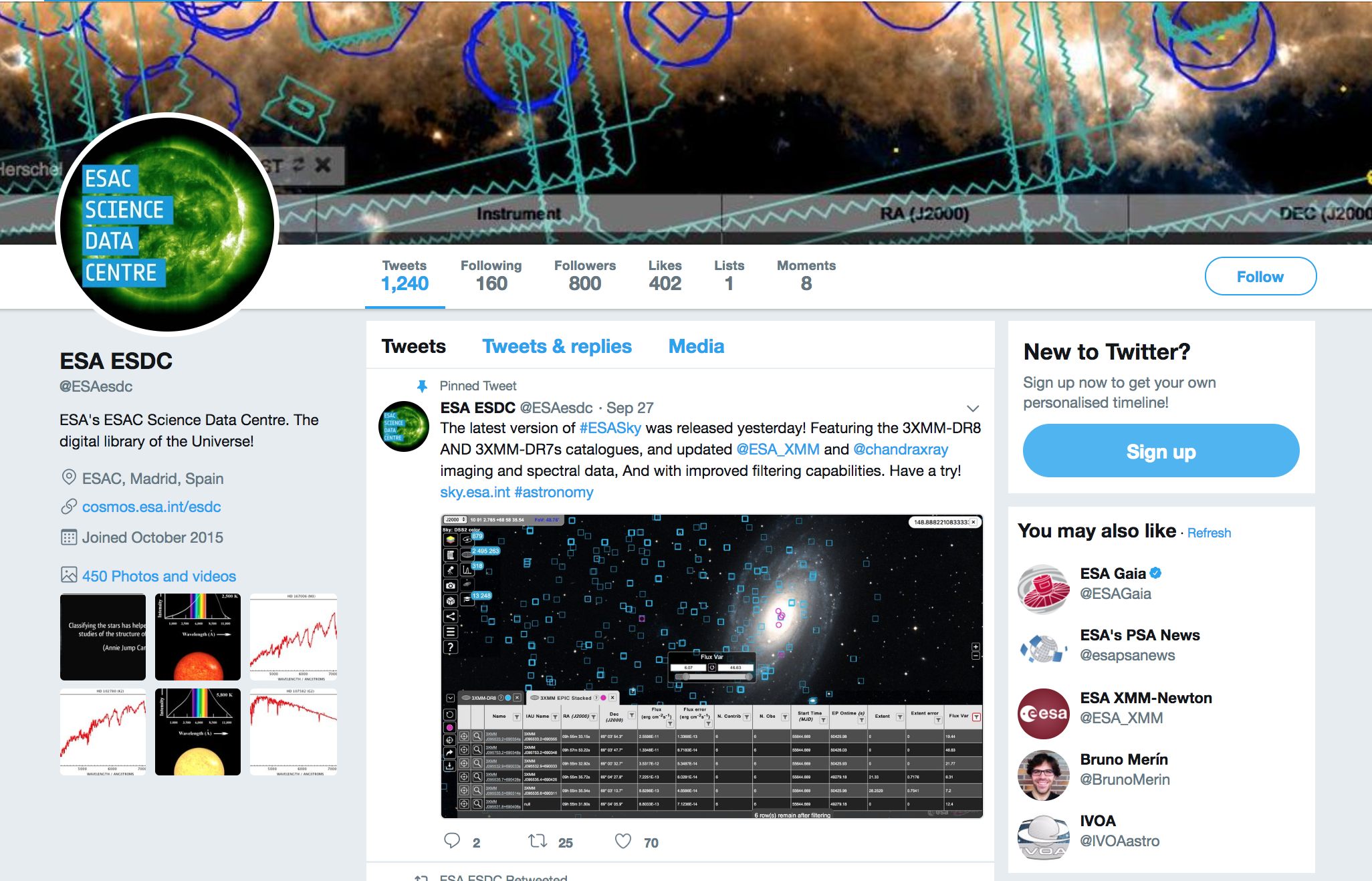 Image: ESA/ESDC
Image: ESA/ESDC
Attendees had the opportunity to visit the ESA booth and to participate in several sessions devoted to ESA missions.
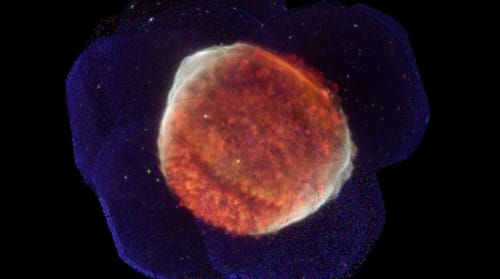
A new release of ESASky features the 3XMM-DR8 and the 3XMM-DR7s catalogues, and updated Chandra and XMM-Newton datasets.
Full story

The archive has recently incorporated the Bailer-Jones et al. distance catalogue. It also features new Cone Search services.
Full story

Users can customise the image size and resolution, and choose the output sky projection, to generate an astronomical image from any of the available all-sky maps.
Full story
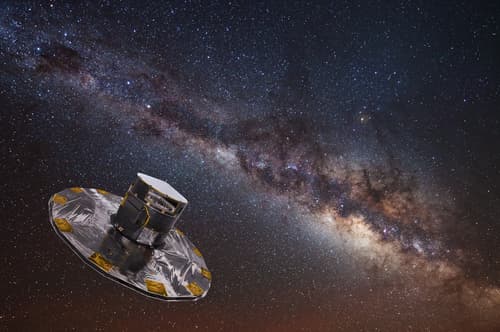
Several recent papers through more light on the dynamics of our home Galaxy and how it interacts with other galaxies. And as bonus, the origin of our first interstellar visitor could be revealed.
Full story
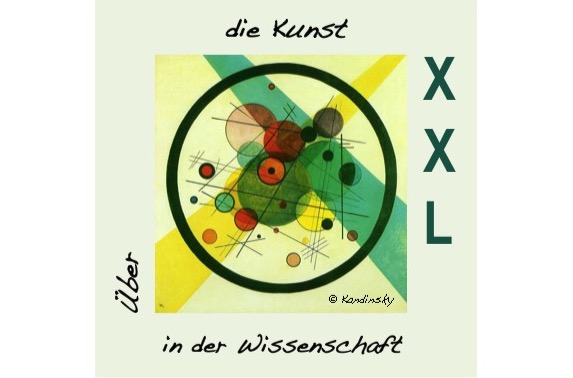
This second batch of data, available through the XMM-Newton Science Archive, includes observations from 365 galaxy clusters and 26,000 Active Galactic Nuclei.
Full story
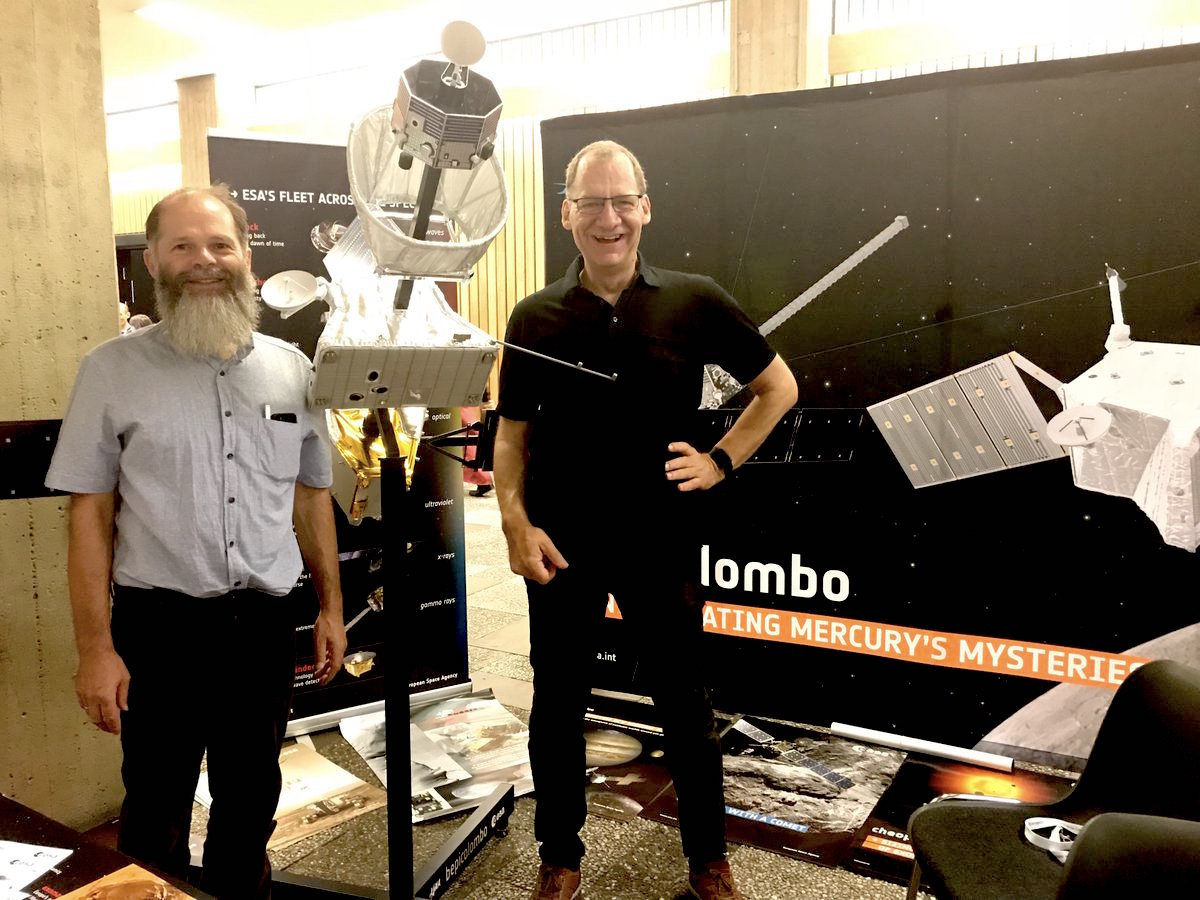
The European Planetary Science Congress 2018 took place between September 16 and 21 in premises of the Technische Universität (TU) in Berlin.
More than 1,000 participants from 44 countries attended the meeting.
ESA had a strong presence in the congress: There were sessions devoted to the science of Rosetta and beyond, Mars Express, and ExoMars.
The latter presented the first science results of this mission, whose data will be available at the Planetary Science Archive (PSA) very soon for everyone to enjoy.
Scientists also discussed the present and future of the study of the Martian Moons with the use of various different data, and talked about the prospects for Mercury exploration with BepiColombo, whose launch (scheduled for October 20th) is getting close -and the science archive is ready to get the data.
In addition, attendees had the chance to visit the ESA booth to get some goodies and chat with several mission scientists (like Joe Zender and Johannes Benkhoff from BepiColombo, in the image). They could also learn about the new PSA functionalities in a session about interoperability.
The next EPSC meeting will take place in Geneva, Switzerland, in September 2019.
Image: EuroPlanet Society

ESASky users interested in high-energy astronomical data can now query the newest XMM-Newton catalogues:
the latest version of the Serendipitous Source Catalogue (3XMM-DR8), and the brand-new Catalogue of Serendipitous Sources from Stacked Observations (3XMM-DR7s).
Both catalogues cover the range 0.2-12 keV.
Please refer to the ESASky documentation pages for more information.
In addition, several datasets have been updated, including images and spectra from XMM-Newton and Chandra, and HST images and spectra.
The latest version of the application also features improved filtering capabilities.
It is now possible to filter on strings, dates and numerical values.
Image: ESA/ESDC

Bailer-Jones et al (2018) presented a catalogue that provides an estimation of distances for all 1.33 billion stars with parallaxes in Gaia Data Release 2 based on probabilistic considerations, without invoking any assumptions on the properties of the stars (including the extinction).
Their approach allows the authors to infer meaningful distances even when the parallaxes are negative or have low precision.
The catalogue is available in the Gaia Archive with the name external.gaiadr2_geometric_distance, and can easily be cross-matched with the main Gaia catalogue by means of the source identifier.
Also, new Cone Searches services are available for the Gaia DR1, TGAS and Gaia DR2 catalogues, which can be used in VO-enabled applications like TopCat.
Although these services are considered legacy in comparison with a TAP (Table Access Protocol) service, they are extensively used for some applications.
Check the documentation of the International Virtual Observatory Alliance (IVOA) for a description.
Image: ESA/ESDC
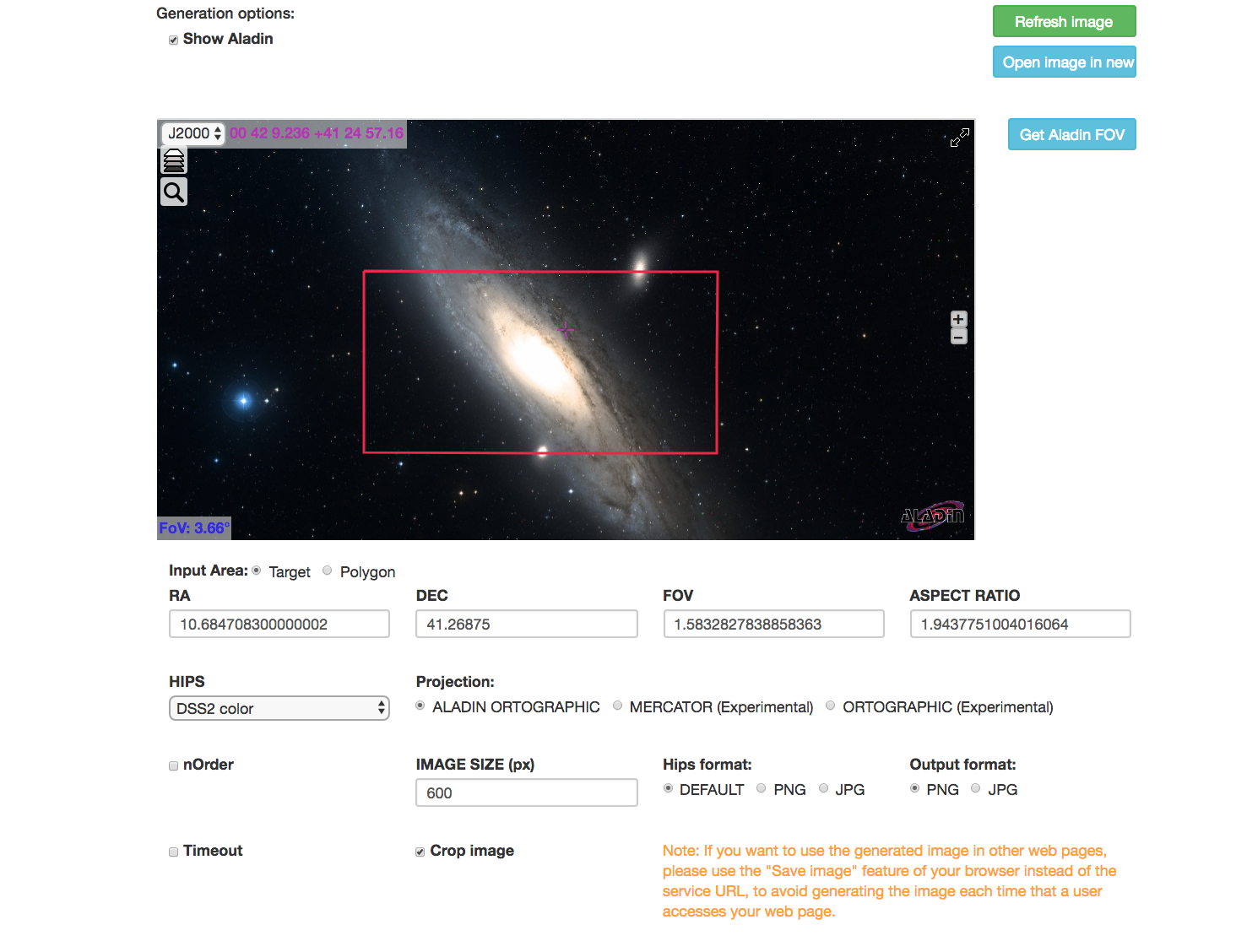
EDDIE is a service intended for the generation of high-resolution astronomical images, giving a field-of-view, an all-sky map and a specific projection.
The input all-sky map is one of the many Hierarchical Progressive Survey (HiPS) maps hosted by the ESDC, and that can be visualised as well in the ESASky application.
These maps are based on the HEALPix tessellation of the sky, but have the advantage of providing different spatial resolutions depending on the size of the visualised sky area, thus increasing performance speed.
Extracting an image with EDDIE is as easy as defining the desired area in the Aladin Lite widget and choosing a sky map from the HiPS menu. The format and size of the output image format are configurable, as well as the zoom level (HEALPix nOrder).
For more information, refer to the EDDIE documentation pages.
Image: ESA/ESDC
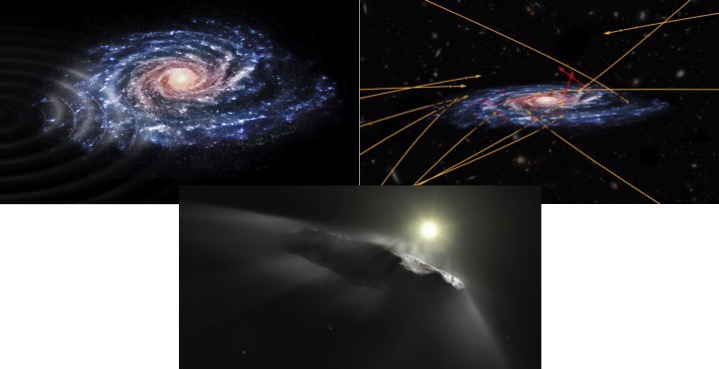
The efforts by the Gaia DPAC and the Gaia Science Archive team to provide scientists with astrometric data of unprecedented accuracy are paying off!
In September, Nature published the results of the research carried out by a team of astronomers from the Universities of Barcelona (Spain) and Groningen (The Netherlands) on the dynamics of stars in the Galactic Disc.
The team, led by Teresa Antoja, has shown that the Milky Way suffers dynamical perturbations due to a previous collision with another galaxy, probably the Sagittarius Dwarf Galaxy. More details are given in this press release.
Just a few days later, another team of astronomers from Leiden Observatory, led by Tommaso Marchetti, announced another intriguing discovery about our home Galaxy.
Studying the motion of stars near the Milky Way’s centre, they were looking for stars that had managed to escape from the gravitational pull of the central black hole.
They were surprised to find not only a much higher number of runaway stars than expected, but also stars that were actually racing towards the black hole and whose high speeds suggest they may be originally from another galaxy.
The results from this work have been published in the Monthly Notices of the Royal Astronomical Society.
Talking about unexpected visitors, a third group of researchers, led by Coryn Bailer-Jones (MPIA Heidelberg), used Gaia data to try to figure out the stellar system of provenance of Omuamua, the first ever-detected comet coming from outside our Solar System.
In their paper (accepted for publication in The Astrophysical Journal), they propose four stars as possible origins of this interesting object.
At the ESDC, we are already working to get the archive ready for Gaia DR3, planned for 2021, with the goal of helping scientists make many more exciting discoveries like these ones.
You can collaborate in this task by sharing with us your suggestions and requests through the Gaia Helpdesk.
Images: ESA

The XXL survey is the largest observational programme of the XMM-Newton mission to-date.
It observed two large contiguous regions of the sky in X-rays at a sufficient depth to allow the mapping of the distribution of galaxy clusters and Active Galactic Nuclei (AGN) out to the distant Universe.
The second batch of data from this survey was made available on October 4th, 2018.
It contains 365 galaxy clusters and 26,000 AGN, a major improvement over the previous release (dating from 2015).
The first results from these data, published in a special issue of Astronomy & Astrophysics, are consistent with expectations from the currently accepted cosmological model.
This is the first time that scientists have been able to measure the three-dimensional clustering effect of distant galaxies, tracing the large-scale structure of the Universe with unprecedented detail.
Furthermore, the observations of AGN are improving astronomers’ understanding of the properties and evolution of black holes.
The analysis of the data will continue for a couple of years and is bound to provide many more exciting scientific results.
The survey data are publicly available via the XMM-Newton Science Archive (XSA).
Image: ESA